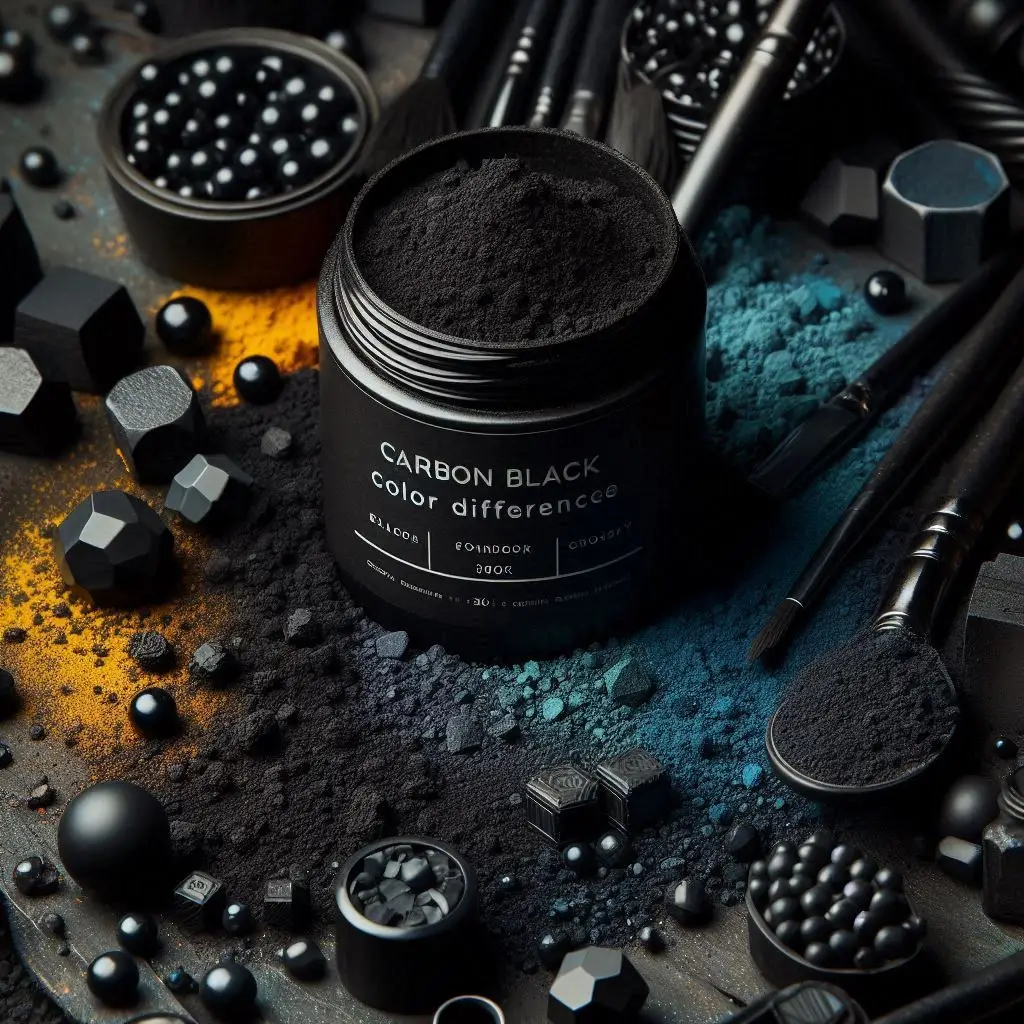
Carbon black color difference
In this exploration, carbon black color difference, I explore the complex properties of carbon black and identify the elements that affect the variations in color.
In the realm of colors, carbon black is a pigment with exceptional status due to its versatility and ubiquity. Although the moniker "carbon black" suggests a homogenous identity, the color has a slight but fascinating range of variations.
Despite being thought of as only a basic black pigment, carbon black has a wide range of color nuances. A harmonic interaction of elements including chemical composition, particle size, surface chemistry, agglomeration, purity, impurities, ambient conditions, and application-specific considerations results in its color variations. By identifying and using these components, businesses are able to make use of the rich color palette that lies underneath carbon black, going beyond its seeming simplicity and bringing nuance to the color wheel. The investigation of the color dimensions of carbon black promises to reveal much more pigment and material secrets as science and technology develop.
Chemical Composition: The main ingredients of carbon black are finely separated carbon particles that are created when hydrocarbons thermally decompose or incompletely burn. Its color profile is largely determined by the minute aspects of its manufacturing process, such as the kind of feedstock used and the combustion circumstances.
Particle Size and Structure: The optical characteristics of carbon black particles are greatly influenced by their size and structure. Larger particles may contribute to a warmer, brownish color, while smaller particles tend to scatter light more efficiently, giving an overall bluer tint. The seemingly black pigment has a dynamic variety of hues because of the complex interaction between particle size and structure.
Surface Chemistry: The color variety of carbon black is also influenced by its surface chemistry. Color changes may result from functional groups on the particle surface changing how it interacts with light. Furthermore, the degree of surface oxidation may lend subtleties to the apparently uniform black pigment, altering the overall sense of color.
Agglomeration and Dispersion: Attractive interactions between carbon black particles often cause them to group together. The hue of the pigment may be affected by the degree of agglomeration; well-dispersed particles have different optical characteristics than those in bigger agglomerates. Reaching the ideal dispersion is essential to use carbon black's whole color range.
Purity and Impurities: The variations in the color of carbon black are caused by both the purity of the material and the existence of impurities. Although the color of pure carbon black is typically deep black, minute variances may be introduced by impurities from the manufacturing process. To maintain the appropriate color constancy, contaminants must be recognized and controlled.
Environmental Factors: A number of environmental factors, including temperature and humidity, may affect how carbon black appears to be colored. Variations in these parameters might change the physical characteristics of the pigment and cause color changes. It is essential to understand and manage these environmental factors in order to preserve color stability.
Application-Specific Issues: There are particular issues when using carbon black in a variety of sectors, such as paint, ink, rubber, and plastics. Tailored color profiles may be produced using various production procedures and compositions to satisfy particular needs. The color complexity of carbon black is further highlighted by its versatility in many applications.
Surface Modifications and Functionalization: The color characteristics of carbon black may be greatly influenced by surface modifications and functionalization methods. Researchers and producers may adjust how well carbon black interacts with light by adding certain chemical functions to the pigment's surface. This procedure improves the pigment's durability, dispersibility, and general color properties. It is often accomplished using chemical treatments. Functional groups provide exact control over the final look of items containing carbon black by introducing tiny color changes or modifying the strength of the black.
Effects of Aging and Weathering: As carbon black ages and is exposed to different weather conditions, its color might change over time. Changes in the surface chemistry and structure of carbon black particles may be caused by ultraviolet (UV) light, moisture, and other environmental conditions. These changes might appear as color shifts when the pigment becomes more subdued or brown in tone. It is important to comprehend how aging and weathering affect carbon black, particularly in outdoor applications like building materials and automobile coatings where carbon black's long-term color stability may be impacted by extended exposure to sunlight and other environmental factors.
Innovation in Carbon Black Applications: As technology and research continues to progress, new formulations and manufacturing techniques are being introduced, broadening the potential uses for carbon black. For example, the different optical effects that may be produced by nanostructured carbon black's unique shape and characteristics provide a new level of color variety. By experimenting with carbon black in cutting-edge domains such as nanotechnology and sophisticated materials, it is possible to uncover previously unattainable color possibilities and extend the limits of what can be accomplished with this apparently ordinary pigment.
Global Views on Carbon Black Color: In addition to scientific and technological considerations, cultural and geographical variables also have an impact on how carbon black is perceived as a color. The formulation and application procedures may be affected by the particular preferences of various sectors and geographical areas for certain shades of black. Understanding these subtleties—which emphasize the complex interactions between science, technology, and cultural influences in the coloring of carbon black—is crucial for producers hoping to serve a wide range of customers.
Essentially, the color variations in carbon black are found throughout the fields of chemistry, physics, environmental research, and cultural studies, not only in labs and manufacturing facilities. With this thorough knowledge, we may appreciate carbon black as a dynamic, versatile substance with a rich and diverse color palette, in addition to its widespread use as a pigment. The more we learn about the intricacies of carbon black, the more avenues for creativity and invention in a variety of fields and applications become available.
https://www.novintrades.com/products/25?title=carbon-black-pigment

